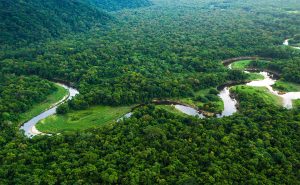
31 interesting facts about Waterfalls
- 👁️ 1265
Waterfalls, nature’s majestic marvels, are found all over the world, captivating the hearts of travelers, photographers, and nature enthusiasts alike. These natural wonders, formed when water flows over a vertical drop in the course of a river or stream, vary greatly in size, from small creeks to immense drops. The allure of waterfalls lies not only in their breathtaking beauty but also in their power and the tranquil sounds of cascading water. Each waterfall has its unique characteristics, shaped by geological processes over millennia. Here are 31 interesting and informative facts about waterfalls that highlight their diversity, significance, and the awe they inspire.
- Angel Falls in Venezuela is the world’s highest uninterrupted waterfall, with a height of 979 meters (3,212 feet).
- Niagara Falls, one of the most famous waterfalls, is located on the border between Canada and the United States.
- The term “waterfall” is often used to describe a series of waterfalls in a river or stream.
- Waterfalls can form through processes such as erosion, tectonic movements, and volcanic activity.
- Victoria Falls on the Zambezi River in Africa is known for being one of the largest waterfalls in the world, based on its combined width and height.
- Iceland is home to some of the world’s most beautiful waterfalls, including Gullfoss, known as the “Golden Falls.”
- Plitvice Waterfalls in Croatia are part of the Plitvice Lakes National Park, a UNESCO World Heritage site, famous for its chain of 16 terraced lakes joined by waterfalls.
- Iguazu Falls, located on the border of Argentina and Brazil, consists of approximately 275 individual drops.
- Yosemite Falls in California is the highest waterfall in North America, with a total drop of 739 meters (2,425 feet).
- The concept of a “frozen waterfall” occurs in colder climates when the water flow stops and freezes in place.
- Tugela Falls in South Africa is considered the world’s second-highest waterfall, with a total drop of 948 meters (3,110 feet).
- Kaieteur Falls in Guyana is one of the world’s most powerful waterfalls by volume of water flow.
- Waterfalls play a significant role in generating hydroelectric power in many parts of the world.
- Some waterfalls are underground, within cave systems, and are accessible only to spelunkers.
- The term “plunge” waterfall is used when water descends vertically, losing contact with the bedrock surface.
- Reverse waterfalls are a rare phenomenon where strong winds blow the falling water upwards.
- Eternal Flame Falls in New York features a natural gas leak right beneath the waterfall, which can be lit to produce a flame.
- The tallest artificial waterfall was created at the Liebian International Building in China, standing at 108 meters (354 feet).
- Waterfalls can significantly contribute to the local ecosystem by aerating the water, which benefits fish and plant life.
- Many cultures around the world consider waterfalls to be sacred places and are often the subject of myths and legends.
- The sound of waterfalls has been shown to have calming effects and is frequently used in meditation and relaxation practices.
- The sediment carried by the water can carve and shape the waterfall over time, creating unique geological formations.
- Rhine Falls in Switzerland is the largest plain waterfall in Europe.
- The Gocta Cataracts in Peru were relatively unknown to the outside world until 2006.
- Dunn’s River Falls in Jamaica is one of the few waterfalls that empties directly into the sea.
- Detian Falls, located on the border between China and Vietnam, is Asia’s largest transnational waterfall.
- Baatara Gorge Waterfall in Lebanon drops 255 meters (837 feet) into an ancient cave.
- Waterfalls are popular subjects in photography and art due to their dynamic and majestic nature.
- Some waterfalls dry up seasonally, depending on the local climate and water source.
- Waterfalls have been used as filming locations for numerous movies and TV shows due to their dramatic scenery.
- Many waterfalls offer nearby hiking trails, allowing visitors to explore the surrounding natural beauty.
Waterfalls are more than just stunning visual spectacles; they are powerful forces of nature that sculpt the landscape, support ecosystems, and captivate human imagination. From the thunderous roar of Niagara Falls to the serene beauty of a secluded creek, each waterfall tells a story of geological history and natural wonder. As we continue to explore and appreciate these magnificent creations, we are reminded of the importance of preserving natural habitats and the environmental significance waterfalls hold within our planet’s ecology.











